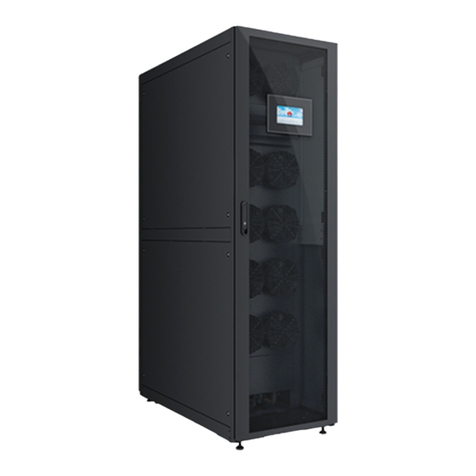
4 Power-On Commissioning................................................................................................... 83
4.1 Preparing for Power-On......................................................................................................................................................83
4.2 Power-On................................................................................................................................................................................. 83
4.3 Home Screen.......................................................................................................................................................................... 90
4.4 Menu Structure...................................................................................................................................................................... 92
4.5 Initial Conguration............................................................................................................................................................. 93
4.5.1 Setting Temperature and Humidity Values and (Optional) Enabling T/H Sensors....................................93
4.5.2 (Optional) Setting the Pressure Dierence Control.............................................................................................. 95
4.5.3 (Optional) Setting Teamwork Control Parameters................................................................................................96
4.5.4 Setting Communications Parameters.......................................................................................................................103
4.5.4.1 Setting Communications Parameters (Modbus RTU Protocol)................................................................... 104
4.5.4.2 Setting Communications Parameters (Modbus TCP Protocol).................................................................... 104
4.5.4.3 Setting Communications Parameters (SNMP Protocol).................................................................................105
4.5.5 Correlation Relationship of Parameters.................................................................................................................. 110
4.6 Startup and Wizard Startup............................................................................................................................................111
4.6.1 First Startup Flowchart..................................................................................................................................................111
4.6.2 Startup................................................................................................................................................................................ 113
4.6.3 Startup Wizard................................................................................................................................................................. 117
4.7 (Optional) Power-O........................................................................................................................................................120
4.7.1 Antifreeze Handling....................................................................................................................................................... 121
4.8 Checking After Commissioning......................................................................................................................................122
5 WebUI.................................................................................................................................... 124
5.1 Preparations and WebUI Login...................................................................................................................................... 124
5.2 WebUI Introduction........................................................................................................................................................... 126
6 System Operation and Maintenance..............................................................................128
6.1 Routine Maintenance........................................................................................................................................................ 128
6.1.1 Routine Maintenance Overview.................................................................................................................................128
6.1.2 Routine Maintenance Items........................................................................................................................................ 129
6.2 Alarm Reference..................................................................................................................................................................132
6.3 Troubleshooting.................................................................................................................................................................. 153
6.4 Parts Replacement............................................................................................................................................................. 155
6.4.1 Replacement Requirements.........................................................................................................................................155
6.4.2 Replacing an Air Filter................................................................................................................................................... 155
6.4.3 Replacing a Fan............................................................................................................................................................... 157
6.4.4 Replacing a Wet Film Humidier.............................................................................................................................. 158
6.4.5 Replacing a Dierential Pressure Switch................................................................................................................ 160
6.4.6 Replacing a T/H Sensor.................................................................................................................................................162
6.4.7 Replacing a Supply Air Temperature Sensor..........................................................................................................163
6.4.8 Replacing a Water Inlet or Outlet Temperature Sensor.................................................................................... 165
6.4.9 Replacing a Rectier...................................................................................................................................................... 166
6.4.10 Replacing a Main Control Board............................................................................................................................. 168
6.4.11 Replacing a Water Valve Actuator..........................................................................................................................169
NetCol5000-C(030, 032, 065) In-row Chilled Water
Smart Cooling Product
User Manual Contents
Issue 04 (2021-03-15) Copyright © Huawei Technologies Co., Ltd. vi































